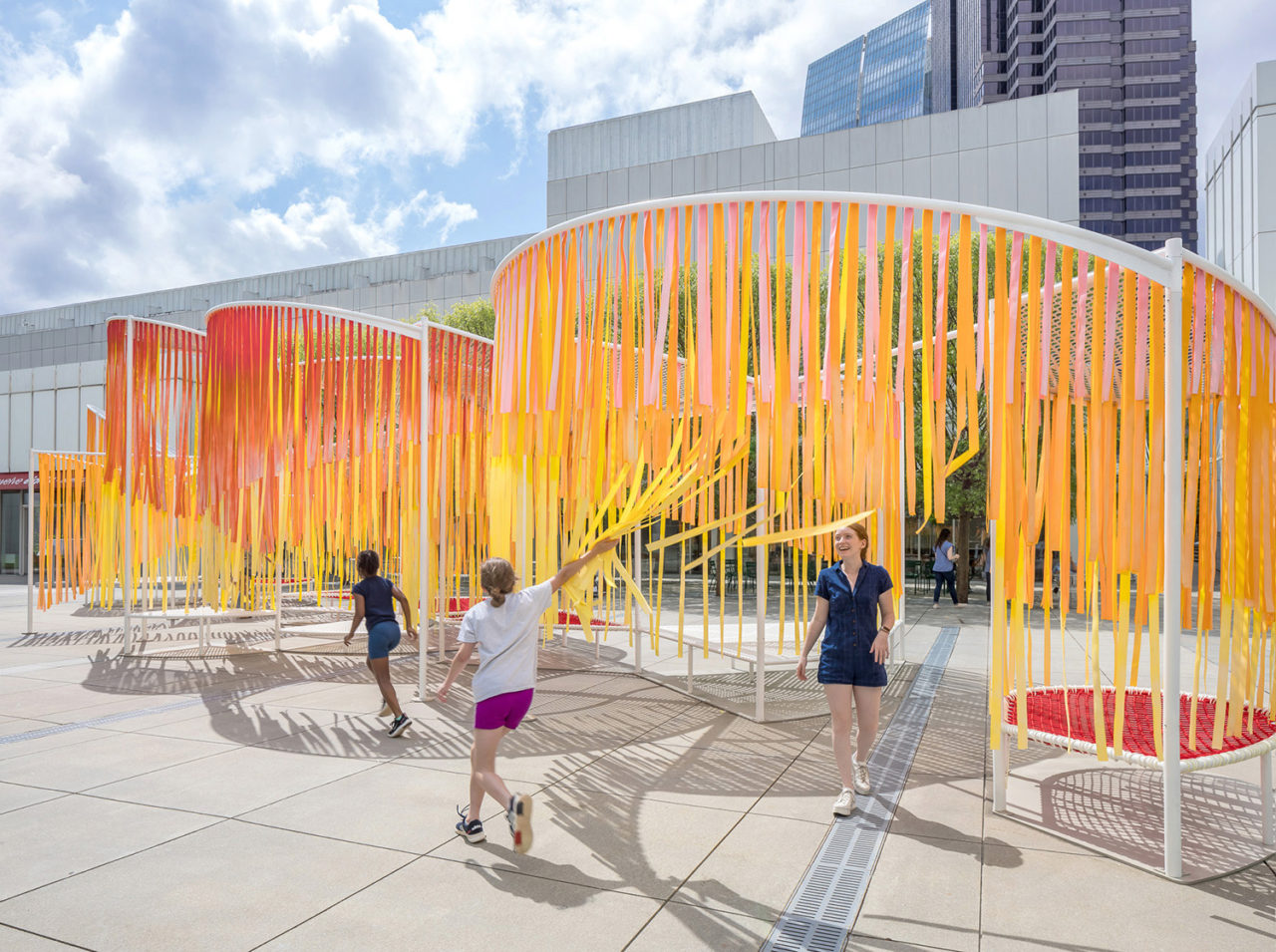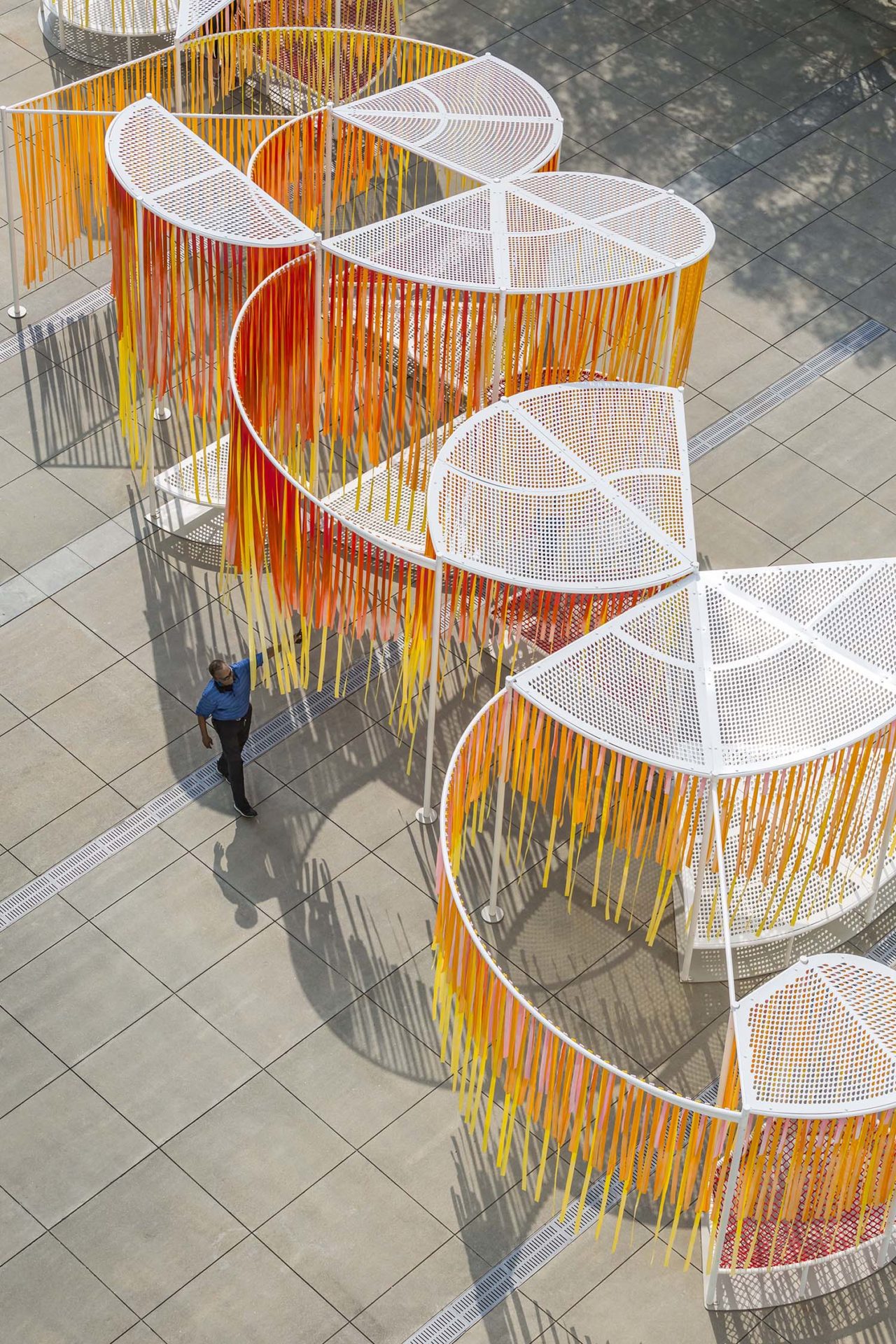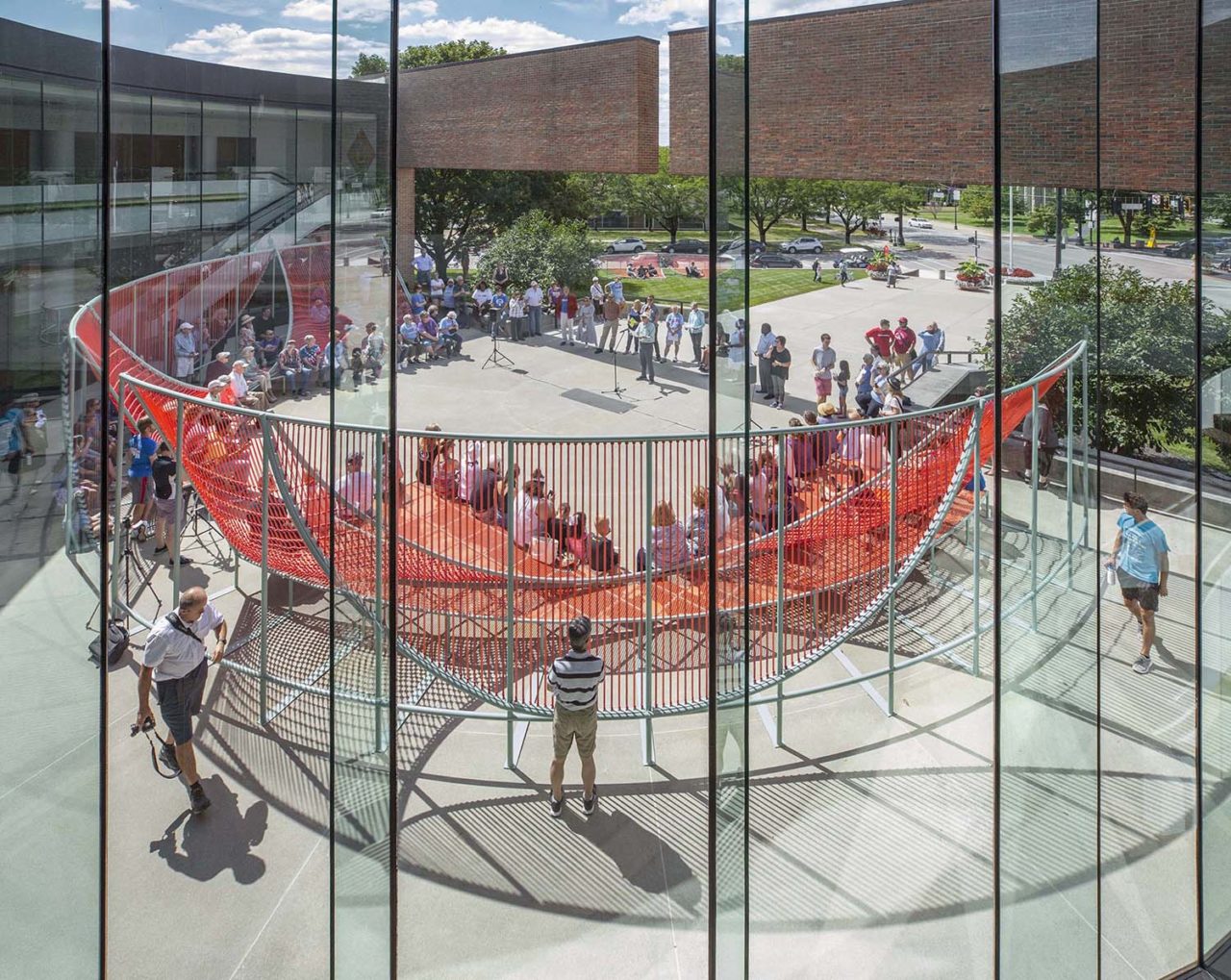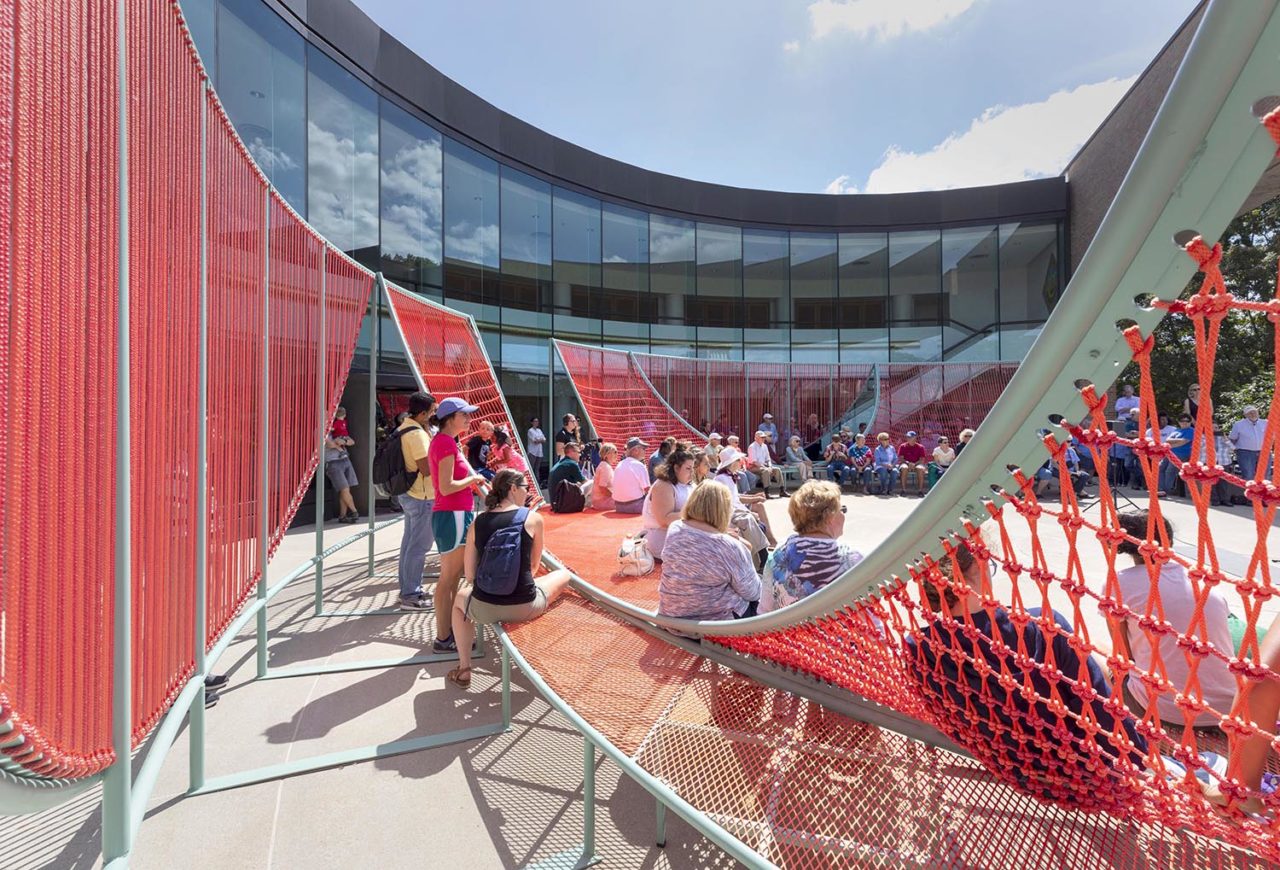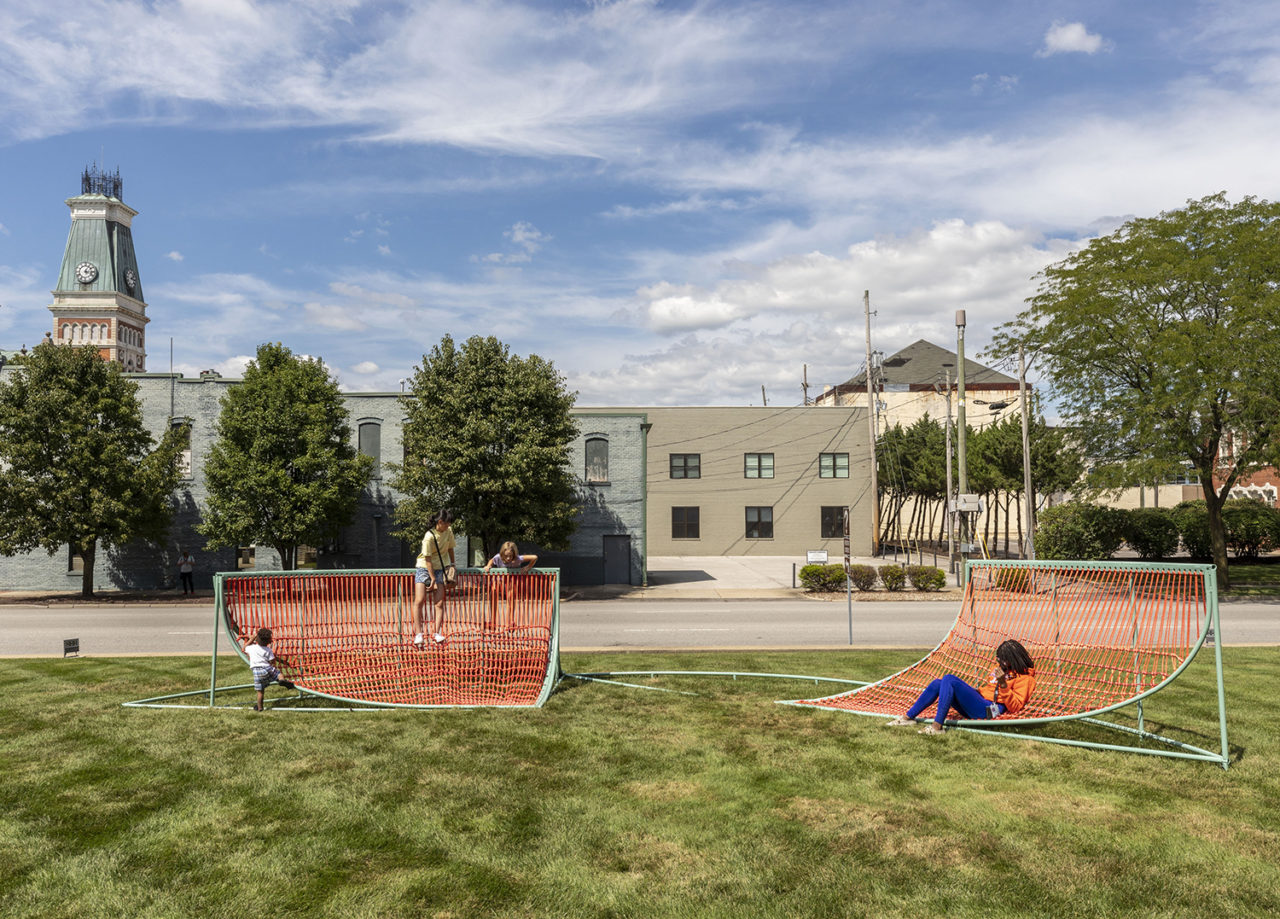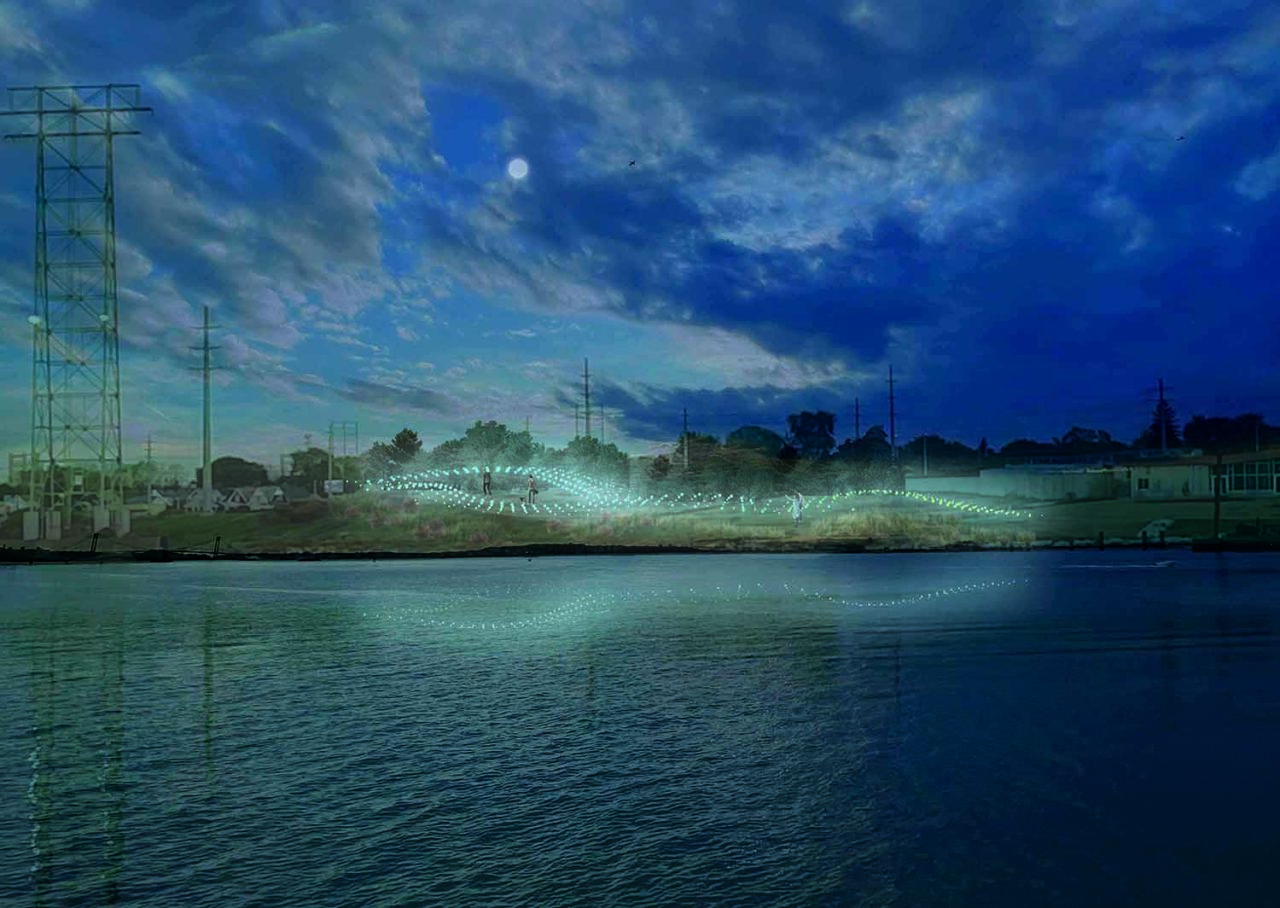by Center for Architecture
The Center for Architecture’s latest exhibition, New Practices New York, showcases the six winners of the most recent cycle of AIA New York’s New Practices New York competition, which serves as a platform for recognizing and promoting young and innovative designs firms in the city. This series will introduce you to the winning firms, offering a glimpse of New York City’s bright architectural future. Next up: Bryony Roberts Studio.
Want to learn more about the firm’s approach? Join us for a live conversation with Bryony Roberts Studio on Thursday, December 6, 6:30-8pm at the Center for Architecture.
Founder: Bryony Roberts
Most Recently Constructed Project:
Outside the Lines at the High Museum of Art, Atlanta (2021)
Three words to describe your firm’s design philosophy:
Design as social practice
How would you define your work and in what context?
Bryony Roberts Studio creates community-based projects in the public realm. We expand modes of design practice to address the lived experiences of communities and the current inequities of the public realm, integrating methods from architecture, art, urban design, and historic preservation. We collaborate with local partners to respond to the lived experiences and cultural histories of places.
What drove you to start your practice?
I wanted to be in an interdisciplinary practice—combining art, architecture, research, and social practice—and I couldn’t find an office like that so I decided to start my own. Bryony Roberts Studio intentionally pushes the existing boundaries of practice, bringing in methods from adjacent fields to rethink the material, sensory experience as well as the social conditions of the public realm.
What is your approach to design?
The studio approaches design as a social practice, working with community groups, advocates, and institutions to create transformative projects in public spaces and historical sites around the world. Moving between contextual research, stakeholder interviews, workshops, and material testing, we create projects rooted in specific communities and places. Through innovative material techniques, we produce sensory environments that activate the public realm and celebrate layered cultural narratives.
How do you create an atmosphere that’s conducive to creativity in your practice and work?
I make sure to always make time for creativity every week—and ideally every day. I set aside time to sketch or make rough study models independent of any current project. This time is important for fueling creativity ahead of tackling the logistical challenges of projects. I also support the creativity of people who work with me by appreciating their perspective and encouraging them to explore and iterate their own ideas.
What influences are most meaningful to your firm?
I am very influenced by my colleagues in the faculty at Columbia. There is an inspiring cohort of practitioners and scholars teaching there who are exploring the intersection of social issues and design in architecture. In addition, I’m inspired by the work of contemporary artists, particularly textile and fiber artists, who create dialogue between social practice and material experimentation.
What is your favorite building in New York, and why?
I’ve always really enjoyed the renovation of P.S.1 by Frederick Fischer for how it kept layers of the old school present in the adaptive reuse of the building. I appreciate the roughness of the building and the willingness to let the old social life of the place show through in found materials and spaces. It reminds me of the Palais de Tokyo project by Lacaton & Vassal, another one of my favorite buildings.
How is your approach to design influenced by New York City or what are you doing in New York?
New York City is an amazing place to work on issues of the public realm because it has such diverse and varied public spaces and because there are so many organizations committed to improving the commons. Over the last few years, through collaborations with the WIP Collaborative, I have had the pleasure of working with both Urban Design Forum and the Design Trust for Public Space, in alliance with many different advocacy organizations, to imagine new possibilities for public spaces in New York, specifically with a focus on supporting neurodiversity.
How do you see your work resonate in the wider culture?
The studio focuses on creating public spaces that are accessible, enjoyable, and meaningful to the full range of communities in a place. By collaborating with publics that have been marginalized in the public realm and by working with playful, interactive materials, this work aims to resonate with desires for expression, connection, and play. In resistance to conventional architectural methods and materials, the work offers soft and tactile spaces, which aim to resonate with needs for more nuanced sensory experiences in the public realm.
How did your firm change in the last two years of collective pause? What insights and ideas emerged?
The last two years brought important moments of reflection, clarity, and growth in new directions. The time to look back on previous years of practice brought us clarity about the mission of the studio and our focus on the public realm. Simultaneously, the need for virtual communities and for activation of public spaces brought new collaborations, including the formation of the feminist WIP Collaborative and our work with the Urban Design Forum and Design Trust for Public Space to rethink spaces in New York City. Lastly, this time has sharpened my attention to the importance of supporting mental wellness and neurodiversity in the public realm, which has become the focus on my current work.
What new opportunities did the collective pause present that changed how you practice? How do you see the field changing in the future?
This time has introduced greater flexibility in forms of practice, which has enabled more fluid collaborations. During this time, I co-founded the shared feminist practice Women In Practice | Work in Progress (WIP) Collaborative, through which independent design professionals work together to share their expertise and co-design projects. The virtual format enabled us to collaborate seamlessly, and we continue to work from different locations today. Since Bryony Roberts Studio is also inherently collaborative, the virtual format has enabled me to foster new creative and academic collaborations in other cities, which has broadened the scale and type of projects in my practice.
What new forms of architecture are you doing?
In activating and transforming public spaces, the work of my studio sidesteps existing categories of design to rethink the possibilities of the public realm. Particularly in the wake of the pandemic, city agencies, non-profits, and private organizations are seeing a need to change the nature of public spaces so that they can be more supportive of the communities they serve. My work is part of a shift away from a universal idea of the public towards an exploration of how public spaces can support a diverse range of embodied and cultural experiences. Merging art, architecture, social practice, and historic preservation, the work celebrates the cultural histories and embodied, sensory experiences of communities.
Learn more about the winners of the competition at our New Practices New York exhibition, on view through February 4, 2023.
